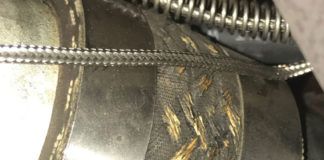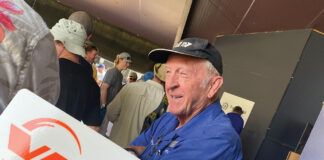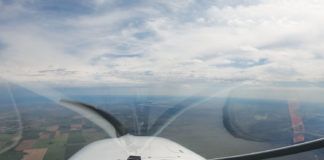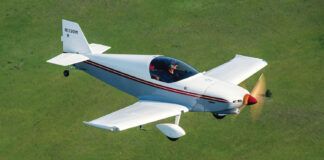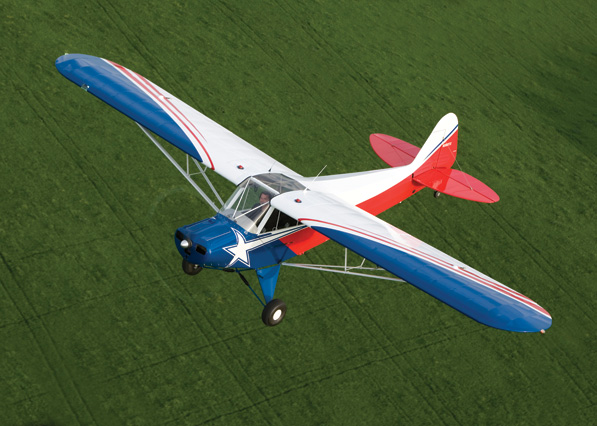
The Texas Sport Cub can be built with assistance from the factorys 21-day KwikBild program.
Its now more than 70 years since C.G. Taylors Taylor Cub design was first produced as the Piper J-3 Cub-with its 40-horsepower Continental engine and $1000 price tag. Built for only 10 years beginning in 1937, the J-3 nonetheless became so popular that for decades the public referred to all single-engine lightplanes as Piper Cubs.
In recent years, the Cubs appeal has not waned. Piper and subsequent owners of the J-3 type certificate have apparently stopped defending it against copies, and the result is a resurgence of modern versions of the iconic Cub, complete with the name and often with Cub Yellow paint and the black lightning bolt trim.
So maybe its not surprising that the best-selling American factory-built Special Light Sport Aircraft (SLSA) is the American Legend Aircraft Cub. American Legend, based in Sulphur Springs, Texas, turns out a surprising variety of Legend Cubs-both factory-built and Experimental-category kits-all with a long list of options and improvements over the Piper J-3 and its successor, the Piper PA-11 Super Cub. American Legends prime U.S. competition, CubCrafters of Yakima, Washington, also boosts the prevalence of Cub-like sport planes with its own line of SLSAs.
What’s New?
Todays Texas Sport Cub (the Experimental/Amateur-Built kit version) and the Legend Cub (the SLSA) are virtually identical, but they differ significantly from the original J-3:
- The familiar Cub upper-and-lower door arrangement is on both sides, not the right side only.
- The Cub may be flown solo from either seat, not from the rear seat only as in the J-3.
- The cabin is about 4 inches wider.
- Power is increased to 100 or 120 horsepower, depending on which engine is chosen (Continental O-200-D or six-cylinder Jabiru 3300A).
- The fuel is in the wings, not in a tank above the front-seaters knees-that makes it more like a Super Cub or one of the so-called short-wing Pipers.
- Modern covering materials and paint reduce long-term maintenance.
- There are two cowl choices: cylinders in the breeze as in a J-3 or a pressurized cowl like a Super Cubs.
- The cost (for the factory-built SLSA version) is about 100 times as much as the original Cub.
Also new are options that could make selection a formidable task. The list includes Baumann amphibious floats (which raise the LSA maximum gross from 1320 pounds to 1430 pounds), skis, Dynon glass-panel instruments (all of them), TruTrak autopilot, tundra tires, plus various military and civilian paint schemes.
American Legend headquarters has added workspace. Four hangars totaling 45,000 square feet now comprise the production facility.
Building and Licensing It
The Texas Sport Cub kit version adds even more choices. It can be built at home or under company supervision using factory jigs and tools with the KwikBild program. In 21 days, major airframe structures are completed, and a follow-on factory course teaches the owner to cover and paint the airplane. The company emphasizes that this program does not build the airplane for the customer; the buyer actually does the construction.
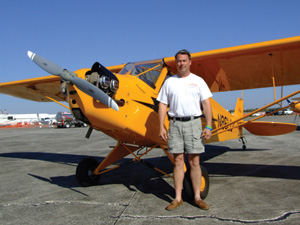
Darin Hart also had the factory-built American Legend Cub SLSA at the Sebring show.
Yet there are more major choices to be made. The airplane can be completed as an Experimental/Amateur-Built project, which entitles the original builders to the Repairman Certificate and authority to perform the annual condition inspection on their own airplanes. The plane can be licensed for a gross weight of 1600 pounds, allowing a large useful load but precluding operation by a Sport Pilot. Or it may be licensed as an Experimental/Amateur-Built but at a lower 1320-pound gross weight for use as an LSA by Sport Pilots. That registration is forever; subsequent owners cant change it. Once its been licensed as a 1320-pound ship, it stays that way.
And another major choice: The homebuilt may be licensed as an Experimental Light Sport Aircraft (ELSA) based on the Legend Cubs status as a factory-built Special LSA. The advantage of this decision is that every owner-original and subsequent-can take a 16-hour LSA inspection course and then perform the annual condition inspection.
As with all homebuilt projects, the primary advantage is the fun of building it, not a chance to save a lot of money. In a recent interview with KITPLANES Editor Marc Cook, a Legend rep said a minimum of about $80,000 is required to get a Texas Sport Cub in the air. That assumes simple instruments and avionics, and maybe a reconditioned engine. For comparison, the factory-built SLSA Legend Cubs range in base price from $110,000 to $116,000.
Flying One
My brief experience with the Cub avoided all of those choices. A new Texas Sport was on the line at last winters Sebring LSA event, and company rep Darin Hart was available to show it off. After a walk-around preflight, I climbed into the front seat and immediately appreciated the extra elbow room and visibility, especially compared with the genuine rear-seat-solo Piper J-3s I rented nearly 40 years ago. On the Texas Sport Cub, wing attachment points have been moved, allowing greater front-seat eyeball height, which may be an advantage.
Taxi and takeoff were Cub/Super Cub simple, bringing back memories of a lot of glider towing with Super Cubs. Like the originals, the Texas Sport Cub is a rudder airplane. You will need some hand/foot coordination to keep the slip/skid ball somewhere near the center in climbout, idle descent, and when rolling into and out of banks.
At cruise altitude and airspeed-near 2000 feet and 95 mph-I tried full-deflection banks of 45 from one side to the other. The drill took about 3 seconds each way, which is close to a typical LSA roll rate. Like a Super Cub, this Texas Sports ailerons were relatively stiff. I needed more than one-finger pressure to put the bank angle where I wanted it.
Light Sport Aircraft need positive pitch stability, and the Texas Sport Cub has plenty. Unlike a lot of homebuilts, this airplane works quickly to restore its trimmed airspeed and attitude after a pitch disturbance at cruise airspeed. In one hands-free cycle after pitching the nose up or down slightly, it was back where it started.
We tried a series of stalls, and all were as docile and easily recoverable as I remember them being in the Pipers. A 2400-rpm departure stall came at 33 mph calibrated. Neither wing dropped at the break, and releasing back pressure had us flying gracefully in a second or two. The same recovery characteristics were seen in all stall varieties.
Like the original and new Cub types Ive flown, the Texas Sport has a flat glide (a ratio of maybe 9:1 at idle), but it responds well to slips. This Cub looks and feels natural, yet you wouldn’t know it from my series of attempted three-point landings. In every case, I touched down before flaring enough to reach the proper three-point attitude, resulting in a bounce. Safe enough, but embarrassing. Analyzing this after the flight, I believe the problem was failure to take my own advice: Sit in a taildragger on the ground long enough to memorize a pitch reference (cowl above the horizon a certain amount, for example). Anyway, no damage was done except to the ego, which may heal. There’s no problem with the Texas Sport Cubs landing performance, just mine.
With or without taildragger qualifications, youd no doubt like any of the Cubs. Building your own Texas Sport would just add to the fun.
For more information on the Texas Sport Cub call 866/746-6159 or visit www.txsport.aero.

![]()
Dave Martin served as editor of this magazine for 17 years and began aviation journalism evaluating ultralights in the early 80s. A former CFI (airplanes, gliders, instruments), hes flown more than 160 aircraft types plus 60 ultralights (including a single-seat, no-basket hot air balloon). Now living at a residential airpark in Oregon, he flies his Spacewalker II homebuilt as a Sport Pilot.

